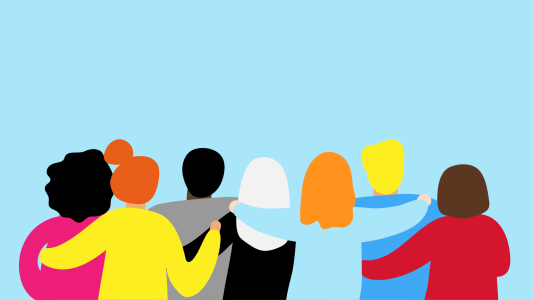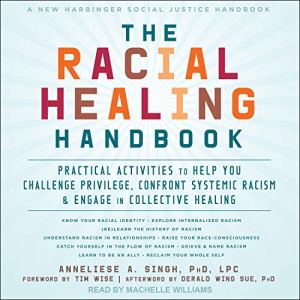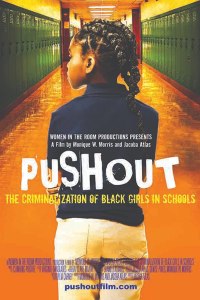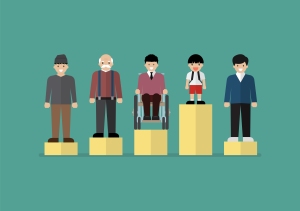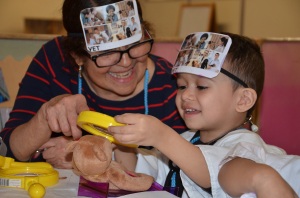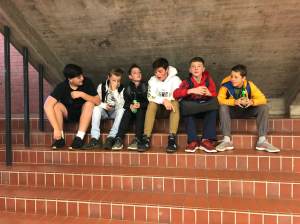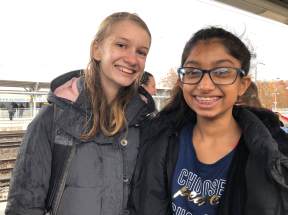student engagement
Where the Light Travels: Creative Media Builds Confidence and Digital Literacy
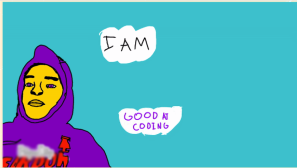
“Soon the digital divide will not be between the haves and the have-nots. It will be between the know-hows and the non-know-hows.”
– Stanford lecturer Howard Rheingold
Where the Light Travels is an after-school enrichment class designed to integrate photography and digital media into core areas of learning such as English Language Arts and Social Science. This project supports refugee youth in San Diego, creating engagement and connection by bridging hands-on creativity with technology and art.
The need for technology and visual communication has never been more important. This was highlighted as the world was sent into isolation with the impacts of COVID-19. “We use digital photos and videos to share our understanding, to connect with our communities, and to express ourselves,” stated Jana McBeath, Media Educator and Youth Council Coordinator with Outside the Lens. Receiving a three-year grant from the McCarthey Dressman Education Foundation is allowing McBeath’s project, Where the Light Travels, to transform an elementary after school digital media class into a safe space to build confidence while increasing digital and media literacies. She has seen firsthand how having media skills to use in life can change a student’s focus from self-identity, to family, community and eventually become a new language to use worldwide.
What were the goals of the project and how were they achieved?
Where the Light Travels was implemented virtually in partnership with the San Diego Refugee Tutoring Program as an after-school class with goals to:
- integrate ELA and core academic subjects using photography, videography, animation, and mixed media
- build confidence and engagement in students and their academic subjects
- create a safe space to encourage storytelling, identity and creativity
- showcase projects at a community exhibit honoring student work from throughout the year
Craft boxes with various art supplies and props were provided, as well as sealed envelopes with project materials. iPads loaded with apps for animation, photography, digital art, film editing, and other resources were also given to each student. To help combat screen fatigue, now that all of the students were learning online every day, the focus of the projects relied on the incorporation of tactile and hands-on activities, even though the project was designed to enhance digital literacy.
Consistent engagement became one of the major components of success. This was achieved in many ways. In addition to opening the sealed project envelopes online together each week, an emphasis was put on daily connection, using digital tools like Flipgrid and Google Chat for sharing jokes, art and ideas separate from the specific project.
Students were encouraged to experiment, explore and create in their free time in whatever interested them most and report back with self-directed projects. This was an opportunity to see what interested each student most, and reinforce the ELA and Skill standards in the discussion and evaluation of each student’s work. The consistent engagement, paired with the flexibility to adapt the curriculum to address varying curiosities, concerns and interests made the pivot to a virtual afterschool program arguably more successful than originally envisioned.
What progress did they make to their goals?
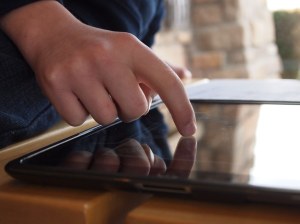
The projects created by the students really speak to the progress made in this program. The confidence of the students shines throughout and the results were far reaching. From comedic YouTube videos to dance performances and tactile science experiments, all of the projects incorporated some form of digital media problem solving, verbal and written communication, which addressed the crucial ELA, 21st Century Skills and digital media literacy needs.
What challenges were experienced along the way and what are the ideas for improving the project?
The onset of COVID-19 changed the goal for creative outlets to a necessity and was the biggest challenge for the project. What was meant to be an engaging in person experience now had to be redesigned to an accessible virtual setting that still allowed for meaningful connections for students who were already spending the day learning online. A lot of inventiveness went into pivoting this project to be something joyful for the students to look forward to during what ended up being a very difficult year for them in so many ways.
How has Where the Light Travels affected the learning of students and/or teachers?
Based on feedback from the students, parents, tutors and partners of the San Diego Refugee Tutoring Program, the effect on students was solidly positive. Engagement was achieved, as well as a returning student base. The students were truly able to nurture and develop their identity using their own passions and hobbies to explore interests and curiosities using the iPads and craft kits.
Exciting plans for the Future
As the project entered its second year, still virtual, the number of participating students doubled and included all previous students from the first year. Whether the program continues online, in person, or possibly even as a hybrid, the plans for the future include continuing with the student-led curriculum, utilizing techniques to stay highly adaptable, focus on mixed media projects, introducing advanced photographic processes, and keeping the asynchronous work and connections between classes.
Additional Resources
Learn more about supporting digital literacy for learners who are refugees:
HawkWatch International: Using Hands-on, Real-life Learning to Improve Student Achievement
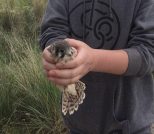
What were the goals of the project?
The goals of the “Cavity Nester Citizen Science Study” fall into four categories:
- To improve science proficiency in local high school students by giving students the opportunity to participate in real scientific research.
- To get students outdoors as part of their education.
- To support the community and create community awareness of cavity-nesting species.
- To learn more about the movements, environmental impacts, and causes behind declining populations of local cavity-nesting birds and what we can do to conserve these species.
How were these goals achieved?
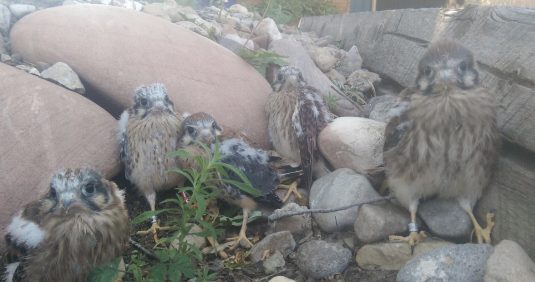
The project team hosted professional development workshops for teachers to introduce them to the project and explain how it supports the state’s curriculum. Lesson plans in biology, statistics, and environmental science were created. The lesson plans are shareable so the project can be replicated in other schools.
Students were trained how to properly monitor next boxes and cavities. HawkWatch International led trips for students to learn about and assist with banding birds. Utilizing their new skills, students monitored nest boxes and cavities near their school, conducted weekly habitat assessments, and recorded their data observations in field journals. They formulated hypotheses, analyzed the data collected, and formed conclusions about the birds being studied. Students presented their findings in a symposium open to their peers, families and the broader community.
What challenges were experienced along the way and how were they addressed?
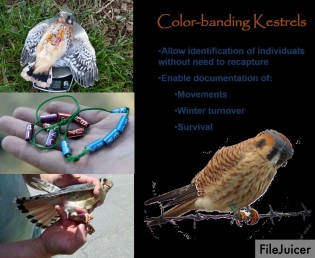
Like most organizations, HawkWatch International was deeply affected by the COVID-19 pandemic. Of the four schools originally involved, two had to drop the program and the remaining two temporarily closed. Since they were unable to physically visit classrooms or take students out to check nest boxes, they were forced to pivot to virtual visits. The project later transformed into a hybrid approach, providing a mix of virtual and real-life visits to classrooms.
Exciting plans for the future:
HawkWatch International hopes to eventually pilot this project outside of the Wasatch Front in Utah to reach more students and transform them into conscientious environmental stewards eager to take an active role protecting the habitats of cavity nesting birds.
Additional resources:
Environmental Science Pathways: Empowering Students To Find Solutions To Protect The Planet
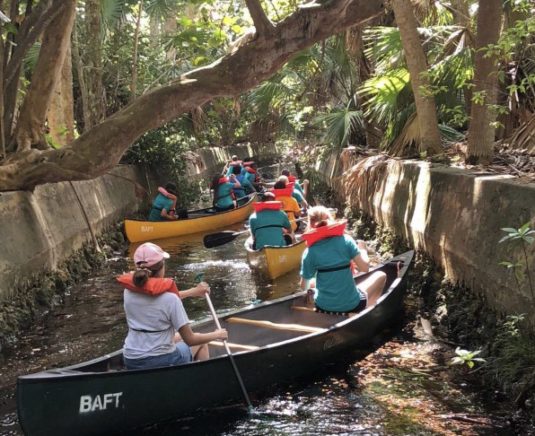
School aged children have experienced growing up in a world where we discuss and hear the current status of the global climate. What if we empowered our students to find solutions to protect the planet? The project team at South Plantation High School in Plantation, FL did just that through their Environmental Science Pathway project. With the support of the McCarthey Dressman Education Foundation, they sought to develop a curriculum that is guided by the themes of reducing the carbon footprint, water issues, and human population issues.
What were the goals of the project?

The project team wanted to instill environmental stewardship in their students through their comprehensive Environmental Science Pathway Curriculum. In doing so, students will become more engaged in their coursework and gain industry-identified content knowledge and employability skills. To accomplish their goal, the team recognized their teachers needed time to work collaboratively to identify and address student challenges, develop shared goals for the pathway, and gain the skills necessary to implement the developed goals. They planned to continue with the Environmental Science and Everglades Restoration Professional Learning Community (PLC) and to collaborate with the Environmental Advisory Committee to train and support teachers.
What progress did they make to their goals?
Even with schools going virtual, the project continued on.
The PLC met virtually and in person on a regular basis. Members of the community were trained in new software and e-learning platforms and supported each other by sharing their new skill sets. Chemistry and Environmental Research teachers joined the magnet team.
The PLC team hosted monthly campus beautification days where the school’s outdoor classroom gardens and green spaces were maintained while providing training for faculty and teachers.
Teachers participated in professional learning by attending virtual workshops and on campus events. Students were provided with opportunities for community and civic engagement outside of the classroom through virtual symposiums and conferences.
Cambridge courses that are in alignment with the Environmental Science Pathway were infused into the magnet course selection. Environmental programs/ lessons and field trips were executed virtually, on campus, and at home with the help from their Environmental Advisory Committee across all grade levels. Most programs included an outdoor learning component. Teachers provided hands on learning opportunities that exceeded curriculum standards for in-person and virtual students.
What challenges did they face and how did they address them?
The greatest challenge for the project team was learning how to use the online learning software in which all school operations had to take place. The grant team learned a new set of tools and a very high level of patience as technology is a great educational vehicle until it doesn’t work or students cannot access.
The team also recruited an alumnus to provide additional technology support. The Environmental Advisory Committee shifted their work from the field to a virtual Environmental programming for students and teachers. The traditional Magnet Open House was in the style of a drive-thru using QR codes.
Another challenge the team faced is not being able to implement the PLC’s common research paper and lab report format due to teachers working in isolation and science labs being limited.
What will they do next?
The PLC teachers have collaborated with the Environmental Advisory Committee to come up with ideas for infusing the newly created virtual programming into their traditional project based learning and field trips. Cross-curricular connections, science research, and hands-on lab investigations will be part of the Environmental Science Pathway Curriculum.
The Everglades Foundation’s literacy training is being planned as professional development for all magnet teachers. In doing so, the project team hopes to become an Everglades Champion School that showcases the project’s success!
Additional Resources
STARS: Real world inquiry excels to new heights at Research Ranch

Science, inquiry, project-based learning, and relevance take center stage in STARS.
At a time of such ecological uncertainty, when some of our greatest minds have given us 1000 years as a species until extinction, one thing is abundantly clear: the study of celestial bodies, near and far, has never been more important. And while 1000 years may be a bit far off to even comprehend, it behooves us to broaden our understanding of our neighboring planets in stars in hopes that when the time comes for us to leave our terrestrial trappings behind, we’re ready.
This is exactly what educators at George West High School have been working on for the past two years with their innovative STARS (South Texas Astronomical Research for Students) program.
“It has widely been assumed that scientific research and especially astronomical research was an endeavor to be pursued at the university level, and even then primarily by graduate students, certainly not at the high school level. STARS challenges that notion.”
-Kenneth Zeigler
Research Ranch Cultivates Learning
STARS is not limited to astronomy. At Research Ranch, tiny ranch by Texas standards of only 34 acres, introduces students to real research in the following fields of study:
- Astronomy
- Solar energy to electricity conversion
- Ecology
- Materials engineering
- New techniques in ranching (the solar ranch)
According to the report, in the first two years of this project all the areas above demonstrated tremendous progress in regards to research. Current efforts continue to focus the project primarily on astronomy, materials engineering, and solar energy.
A Converted Marching Band Trailer becomes a Mobile Astronomical Observatory
One of the most exciting developments of the past year was the STARS observatory telescope coming fully online to fully begin the program. It’s housed in the Mobile Astronomical Observatory, an 8 by 16 foot, 30-year-old converted marching band trailer.
This year saw the final steps of the transformation into a scientific research facility. Even receiving a brand new coat of paint and its official logo as the school year began.
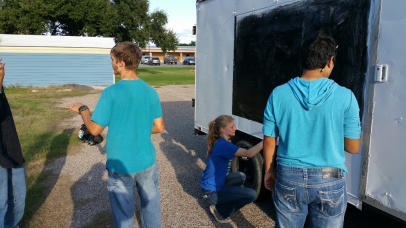
The mobile observatory is divided into a control room and telescope room section. Most of the student researcher’s time is spent in the control room which is climate controlled.
The primary instrument used this year with the telescope was the thermoelectrically cooled CCD camera that could be used to take timed exposures of the heavens as well as make measurements of star brightness at a variety of wavelengths. This opens the possibility of making measurements of color and surface temperature of stars or the shapes and rotational periods of asteroids. The student operators, CCD camera and main telescope are shown in the slideshow below.
Rocketry Club Qualifies for National Competition
The observatory isn’t the only thing to be excited about. An unexpected offshoot of the astronomy program has been a new rocketry program. Interest in the mobile observatory inevitably led to an interest in all things space, and it led students to pursue the Team America Rocketry Challenge. Two teams from George West High School participated in this nationwide competition. The challenge was to build a rocket that would carry two raw hen eggs to an altitude of exactly 850 feet and return them to the ground undamaged in a flight time between 44 and 46 seconds. This is a most difficult task and one of the two teams (Cloud 9) qualified for the national competition.

Solar Voltaic Arrays Support Real World Agricultural Inquiry
The solar ranch is another reason to celebrate this program. Junior Ryan Repka has been working on two different designs for photovoltaic arrays. The first one is the semi-active array. The first panel will be finished before the end of the school year and will be installed during the summer of 2016 with the entire photovoltaic array to be completed during the fall 2016 semester. At that point, Ryan will begin a semester long study as to the best ways to maximize efficiency, from panel positioning to water cooling of the panels.


Through repositioning of photovoltaic arrays as part of the STARS research project, an additional 15-20% solar power efficiency can be realized.While this project exceeds expectations for high school students, it continues to expand student learning opportunities.
In terms of agricultural and ecological research, the project is just beginning to make progress. In fact, an intriguing future project is taking shape. Not far from the observatory site and solar ranch, the first trees of a citrus orchard have been planted. The observatory site is a bit north of the main citrus growing region of Texas. Being on a hill out of areas of cold sinking air help, but this area is subject to serious killing frosts about one year in four. To combat this problem, the students and educators plan to develop what they are calling a microwave defroster. This system could be used to prevent frost damage on citrus but would be even more useful on more sensitive winter vegetables such as lettuce. They plan to initiate a pilot project for this device no later than the winter of 2018.
It truly is an exciting time to be a student or a teacher participating in the STARS program at George West High School. There’s something very powerful about teaching and learning while simultaneously working for a better future for all humans.
Learn More
Inquiry, Relevance, and Citizen Science: A Roadmap to Successful Science Projects
When students tackle science hands on, they can save the world!
If inquiry is meaningful, real world practices improve student understanding.

Memorizing the periodic table, a formula to determine the circumference of an atom, or the genus of a frog can be important, but let’s face it… you’re looking at an uphill battle when you are staring down the barrel of sixty drooping eyelids trying to explain why it is important that the student retain this information.
There is ample evidence that students retain very little from lectures in science classes. There is a reason for this – when you are given lists of equations, tables, or dozens of names to memorize it can be difficult to see where this makes an impact in the real world.
So how do we change this?
Simple. We help students impact the real world using practical inquiry into local and global science. Or better yet, take the classroom to the science! Whether students are contributing data to global honey bee research or graphing the skies, citizen science allows students to participate in global scientific inquiry. As explained here, integrating inquiry based science meaningfully in the real world is a tall order for any educator. In this post, we will share with you an example project and supporting resources to inspire this integration in your classroom.
How do educators integrate scientific inquiry and real world relevance?
The Water Quality Project: A Map to Understanding was reported by Linda Weber of Natick High School in Natick, Massachusetts. The goal of this project at is to let students “do” science like real scientists by observing, questioning, and ultimately coming up with a solution to a problem that can be shared with the larger community. In the short term, participation allows students to see and experience the process of scientific inquiry first hand, rather than having someone dictate it to them. In the long term, students who participated would see how the decisions they were making now would impact their lives in the future. According to the National Science Teachers Association’s position statement:
“Scientific inquiry reflects how scientists come to understand the natural world, and it is at the heart of how students learn. From a very early age, children interact with their environment, ask questions, and seek ways to answer those questions. Understanding science content is significantly enhanced when ideas are anchored to inquiry experiences. “
What strategies can be used to increase the real world relevance of the inquiry process?

One of the long term goals of this project included helping students see how the decisions they make today influences their future. This ambitious goal required teachers to frontload curriculum earlier in the year and to engage students with relevant narratives (like PBS’ Poisoned Waters) and a guest speaker assembly including local and regional water quality scientists.
All of this preparation helped students prepare for real world and hands on activities for the project. These included:
- Helping out their community
For the annual Charles River Watershed Association’s clean-up day, students and teachers removed a variety of trash, from traditional cigarette butts and paper to more unusual things like television sets. For the nearly 50 students that participated (on a school vacation weekend, mind you) the experience was insightful. Class discussions about and concern for their environment lingered into the following weeks in class. These shared experiences became the “reason” to investigate water quality in the community rather than the “just the wrap up activity” of the project.
-
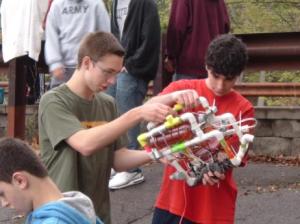
Environmental Science and Robotics classes at collection sites test and launch robots, then collect water samples to be analyzed at the site and in class. Photo from Linda Weber, Project Awardee. Collecting local data
After the students had returned to the area to collect water samples. They used collection robots they built during their classroom time to reach water samples they couldn’t normally get to. Using technologies like wikis, blogs, and Google Maps they were able to share their results instantly with their classmates. - Contributing to global datasets
The project also included research for the testing parameters of The World Monitoring Day Organization or World Water Monitoring Day. The Water Quality Project isn’t the only program in the United States doing this. Many other schools (in over 24 countries) are participating in The World Water Monitoring Challenge. It charges its members to educate and engage students and citizens in the protection of international water resources.
- Presenting the results
When all the research was said and done there was a “massive poster presentation” where every student was required to present his or her findings and share ideas for how to improve the water conditions in their community.
Why does it work?
When learning is meaningful, the impact is tangible.
When students have the opportunity to showcase their skills to a larger audience than their teachers or peers it helps to internalize the lessons they learn in the classroom. This benefit accumulates when the students can see themselves using inquiry-based science to make a real difference in their communities.
Learn more about integrating Citizen Science in education
- British Science Association: The 3Rs of Citizen Science in Education
- Zooniverse
- Audrey Watters: Five Apps that Encourage Citizen Science
Flickr Set: New York City Urban Debate League
Don’t miss this engaging Flickr slideshow from NYC Urban Debate League

